PTERYGIUM
Pterygium Surgery & Pinguecula In New York City
Discover experienced pterygium surgery by calling 212-650-0400 or using our convenient Request an Appointment form. Patients come to us from Scarsdale, Chappaqua and Manhattan, New York, Newark, New Jersey, Greenwich, Connecticut and neighboring locations.
PTERYGIUM SURGERY NYC
PTERYGIUM & PINGUECULA FAQS
What is Pterygium & Pterygium Surgery?
Commonly seen in patients who have spent a lot of time in the sun, a pterygium is a wing-shaped growth on the white part of the eye (the conjunctiva) that then grows onto the cornea. In at risk patients, it is correlated with ultraviolet light (sun), wind, and dust exposure. There is no risk of malignancy and it is safe to monitor a pterygium. However, it can lead to some irritating symptoms, such as foreign body sensation, grittiness, redness, inflammation, and irritation. It can be concerning from a cosmetic point of view. Finally, it can also decrease vision, if it grows over the pupillary axis, or if it causes enough astigmatism. Surgical removal of the ptergyium involves removing the wing-shaped growth form the eye’s cornea and sclera.
What is Pinguecula & Pinguecula Surgery?
Similar to a ptergyium, a pinguecula is a wing-shaped growth on the conjunctiva (the white part of the eye) that does NOT extend onto the cornea (the clear part of the eye). It is similarly associated with sun, wind, and dust exposure. It can have a yellowish tint to it. Most pingueculum do not grow so much as to lead to a ptergyium. Pinguecula are typically removed for similar reasons as ptergyium: foreign body sensation, redness, inflammation, irritation, and tearing. Pinguecula usually do not lead to decrease in vision. Pinguecula surgery is similar to pterygium surgery and involves removal of the growth from the sclera of the eye.
Why Pterygium Surgery?
When conservative medical approaches do not adequately keep symptoms at bay, or when the vision has significantly declined, surgery is performed. Medical measures include lubricating drops, ointments, steroid drops, punctal plugs and glasses/ contact. Modern surgical techniques to remove pterygium and pinguecula have a very low recurrence rate, but that is always a risk. Dr. Rapoport meticulously removes the growth on the conjunctiva and cornea, and places an autograft or an amniotic membrane to cover the area. In recurrent cases, she uses Mitomycin C, an “antimetabolite” chemicals that prevent growth of tissue.
What to Expect?
You will take antibiotic drops for several days prior to the surgery and for a few weeks after. The surgery is about 45 minutes long and there is no pain or discomfort throughout. The growth is removed and Dr. Rapoport place a special amniotic membrane or healthy conjunctival tissue over the area of the defect. There is minimal discomfort for several days after, which is treated with ointment. The eye may be red and inflamed for a few weeks after the procedure, and it will go back to normal appearance a few weeks later. The patient is safe to go back to their day to day activities the next day.
WHY CHOOSE MANHATTAN EYE?

Pinguecula Surgery with Dr. Rapoport in NYC
As an ocular surface expert, Dr. Rapoport has years of experience working with the delicate tissue on the outside of the eye. She balances a conservative medical approach to pinguecula treatment with a technically advanced surgical approach when necessary, leaving the surface of the eye smooth and removing the inflammatory pinguecula.
“I've been essentially blind my whole life and recently decided to get elective eye surgery. I unfortunately did not qualify for Lasik, but did qualify for PRK.
Dr. Rapoport was fantastic - she explained all my options in detail and was very diligent in giving me instructions pre/post operations - even when I asked twice/three times. She's always available to talk and super empathetic. I could not recommend a better eye surgeon!”
Dr. Rapoport was fantastic - she explained all my options in detail and was very diligent in giving me instructions pre/post operations - even when I asked twice/three times. She's always available to talk and super empathetic. I could not recommend a better eye surgeon!”
M.V.
“Best eye doctor in New York! Dr. Rapoport is very personable, professional and most importantly a great doctor. Dr. Rapoport recently performed my LASIK surgery, for which she gave me clear pre and post-op instructions and made a point to check regularly on my progress. She did a great job to put my nerves at ease and walked me through the entire process. Now three weeks after the surgery I
can see better than ever with 20/20+ vision! I strongly recommend Dr. Rapoport if you are considering LASIK, or if you are simply in need of a great eye doctor.”
N.G.
“I have now seen Dr. Rapoport for dry eyes, removal of papillomas around my eyes, and Lasik
surgery. My experiences with her have all been wonderful. She always takes the time to
explain everything really clearly, and my results have all been great. When I originally asked
about Lasik, she gave me a very balanced perspective on my options, which I really
appreciated. She also has a great energy about her, and she's just an overall pleasure to be
around. I have referred several friends and family to her and they've all said great things about
her as well. I can't recommend her enough.”
M.T.
“After seeing Dr. Rapaport for three months I have experienced the greatest improvement for
my dry eye syndrome than I have in the past 15 years. Dr. Rapaport is very knowledgable and
caring. I am very grateful to her and her staff, in particular to Amy, who has been incredibly
helpful to me. Everyone here conducts themselves in a highly professional manner, and they
also run a tight ship in terms of timeliness. I have been seen every time without waiting any
more than 5 minutes, and this I appreciate a lot. I feel very fortunate to be a patient at this
medical practice.”
H.K.
“Dr Rapoport is a skilled, knowledgeable, sincerely caring medical professional. I started
seeing her a year ago and have since moved out of state. Regardless, it’s a priority for me to
continue under her good care.
I feel confident in her abilities - and it is my eyesight afterall!”
I feel confident in her abilities - and it is my eyesight afterall!”
P.J.




